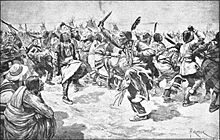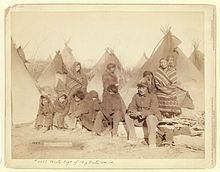
Having mentioned the 150th anniversary of Sand Creek Massacre, I’ll follow it up with a more timely (it happened today in history), less momentous (it happened 124 years ago), but equally awful anniversary: Wounded Knee.
On December 29th, 1890, the U.S. 7th Cavalry Regiment opened fire on a band of mostly Sioux Indians who were camped along the banks of Wounded Knee Creek in South Dakota.
There had been much talk about Ghost Dances in those days. For the Indians, it was a ritual that they believed would raise the spirits of the dead, bring the buffalo back, and drive the white man out forever. For the whites, it was a nervous time, and even though most did not believe in the Ghost Dance, it represented just how desperate the Indians were, and that they would stop at nothing to reclaim their land and their way of life.

Early in the morning, an argument arose in the camp, and a shot was fired. With tensions high, the shot was followed by a massive, chaotic volley. Among the weapons employed were the Army’s new Hotchkiss Guns. These guns were not around during the Sand Creek Massacre, and they proved especially deadly and nearly impossible to escape from.
When the shooting stopped, more than 300 people, the vast majority of whom were Indians, lay dead. These included many Indian women and children. The dead and dying were then left to freeze as the grisly scene was soon enveloped by a blizzard and extremely cold temperatures.

I have always understood Wounded Knee to be the very last “battle” in the nearly 400 years of Indian Wars that occurred across two continents from the time of Columbus. The fact that it occurred squarely in the center of the Great Plains is not surprising. The Great Plains were the last place that Europeans wanted to claim for themselves. They were happy to pass through it on their way to the west coast some 40 years before Wounded Knee. Only after everything else had been occupied did the Great Plains become both the last stand of free Indians, and the last place settled by the descendents of the first Europeans to come ashore in the Americas nearly 400 years earlier.
The Great Plains Trail will pass a bit west of the Wounded Knee site as it crosses into South Dakota near the present day town of Edgemont.

